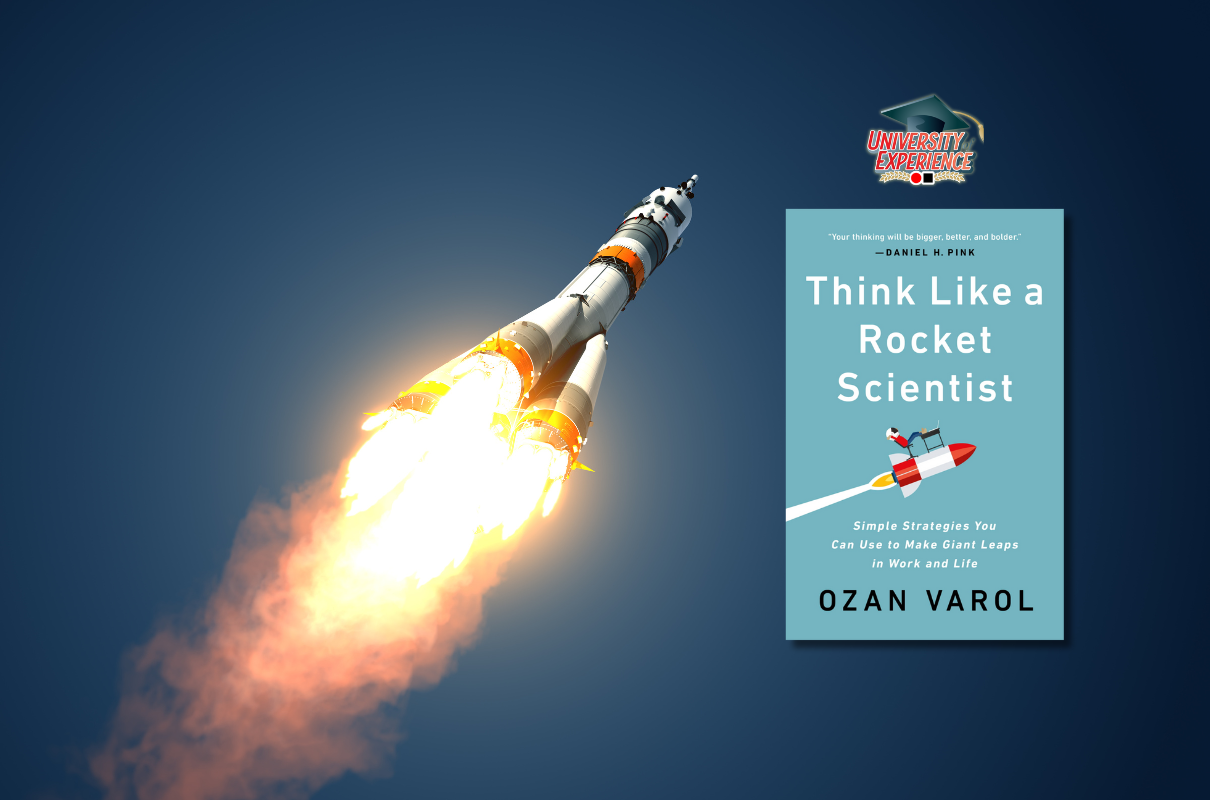By Manuel “Bobby” Orig, Consultant, Apo Agua
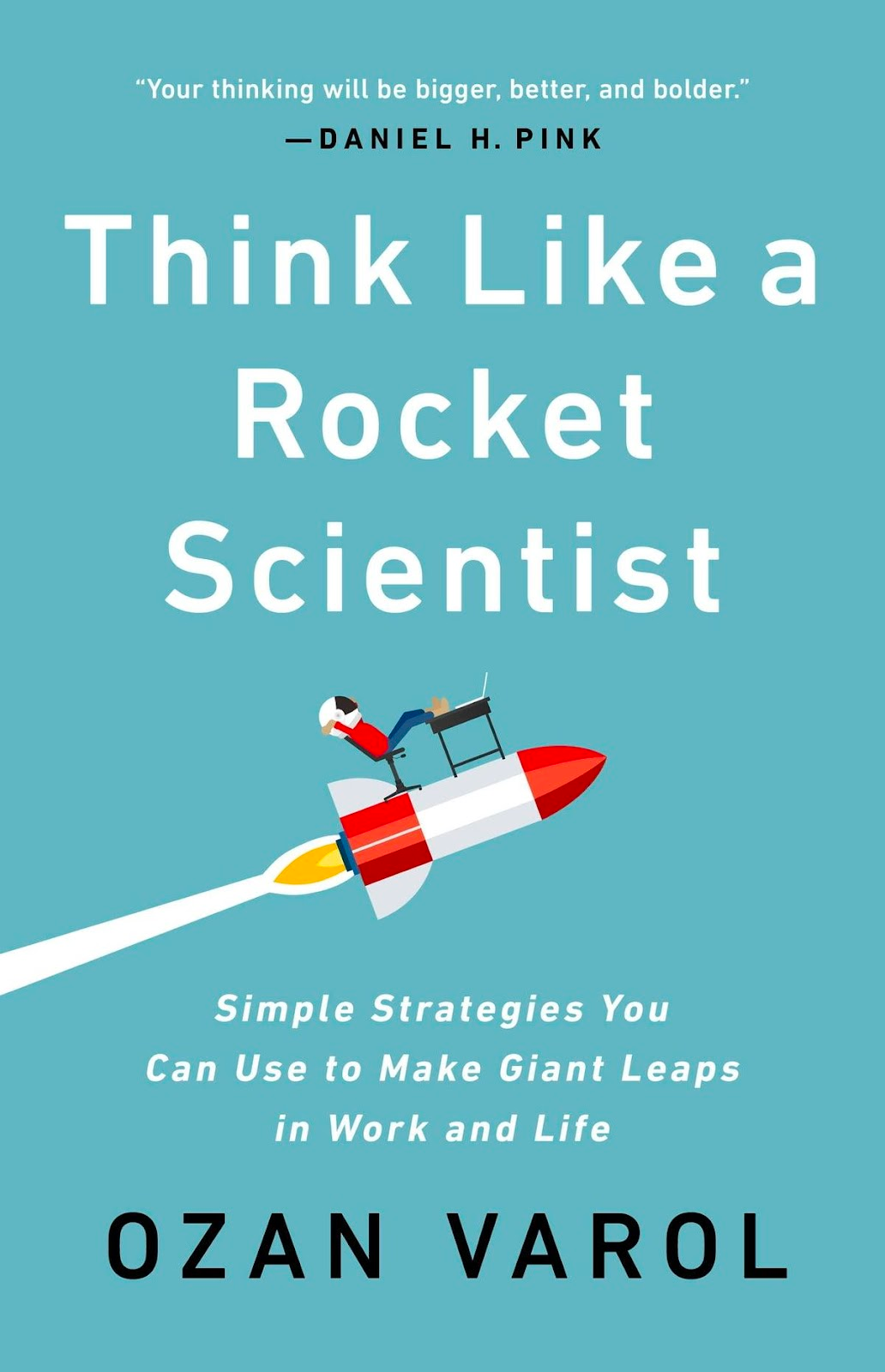
THINK LIKE A ROCKET SCIENTIST
Simple Strategies You Can Use To Make Giant Leaps In Work And Life
By Ozan Varol
Rocket science is the apex of a certain thought process – a way to imagine the unimaginable and solve the unsolvable. It enabled Neil Armstrong to take his giant leap for mankind, it allows spacecraft to travel millions of miles through our outer space and land on a precise spot, and it brings us closer to colonizing the planets.
Fortunately, you don’t have to be a rocket scientist to think line one.
In this accessible and practical book, Ozan Varol reveals simple strategies from rocket science that you can use to make your own giant leaps in work and life – whether its landing a dream job, accelerating your business, learning a new skill, or creating the next breakthrough product. Today, thinking like a rocket scientist is a necessity. In our fast-changing and interconnected society, those who can tackle complex and unfamiliar problems enjoy an extraordinary advantage.
Think Like a Rocket Scientist will inspire you to take your own moonshot and enable you to achieve liftoff.
Acclaim for the book
- One of Inc.com’s “6 Books you need to read in 2020”
- Adam Grant’s #1 pick of his top leadership books of 2020
- One of 6 Groundbreaking Books of Spring 2020
—According to MALCOLM GLADWELL, SUSAN CAIN, DAN PINK And ADAM GRANT
About the author
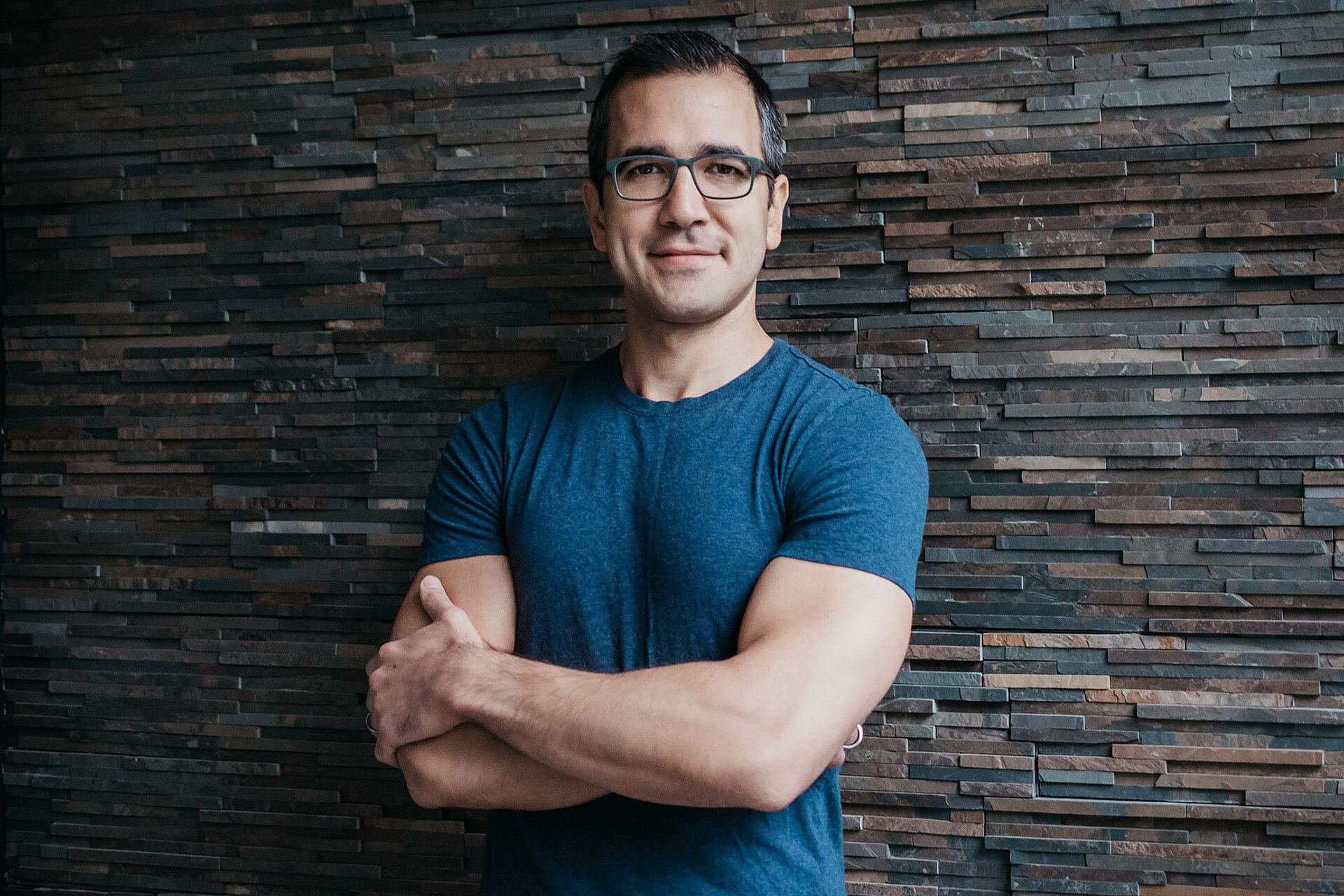
OZAN VAROL is a bestselling author and renowned expert on creativity and strategic thinking. A native of Istanbul, Turkey, Ozan moved to the United States by himself at seventeen to attend Cornell University and major in astrophysics. While there, he served on the operations team for the 2023 Mars Exploration Rover project that sent two rovers to Mars.
Ozan later pivoted and became a professor and author to influence others to make giant leaps on Earth. He has been featured in various domestic and foreign media, including the Wall Street Journal, Newsweek, BBC, TIME, CNN, and the Washington Post.
INTRODUCTION
You don’t have to be a rocket scientist to think like one!
In September 1962, President John F. Kennedy stood before a packed Rice University crowd stadium and pledged to land a man on the Moon and return him safely to the Earth before the decade was out. It was an incredibly ambitious promise – the original moonshot.
When Kennedy gave his speech, numerous technological requirements for a moon landing hadn’t been developed. No American astronauts had worked outside a spacecraft. Two spacecraft had never docked together in space. The National Aeronautics Administration (NASA) didn’t know whether the lunar surface was sufficiently solid to support a lander or whether the communications systems would work on the Moon.
Going into orbit around the Moon – not to mention landing on it – required mind-boggling precision.
For a politician, Kennedy was surprisingly candid about the challenges ahead. The giant rockets to take the astronauts to the Moon, he explained would be “made of new metal alloys, some of which have not yet been invented, capable of standing heat and stresses several time more than the finest watch” and sent “on an untried mission, to an unknown celestial body.”
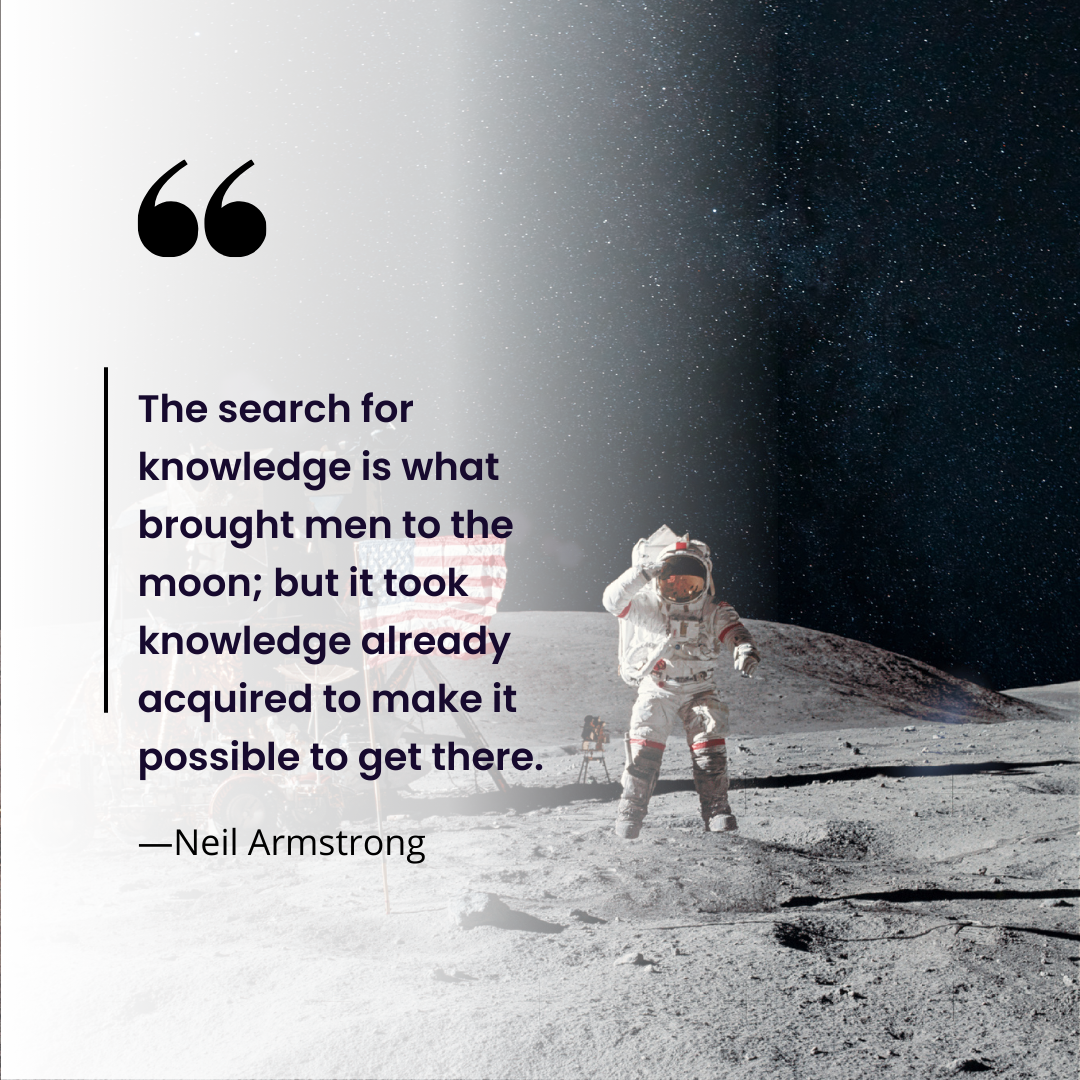
They jumped into the cosmic void and hoped they would grow wings on the way up. Miraculously, the wings sprouted. In 1969, less than seven years after Kennedy’s pledge, Neil Armstrong took this giant leap for mankind.
This giant leap – taken within a human lifespan – is often hailed as the triumph of technology. But it’s not. Rather, it’s the great triumph of a certain thought process rocket scientists used to turn the impossible into the possible. It’s the same thought process that brings humanity closer and closer to colonizing other planets and becoming an interplanetary species. And it’s the same thought process that will make affordable commercial space tourism the new norm.
To think like a rocket scientist is to look at the world through a different lens. Rocket scientists imagine the unimaginable and solve the unsolvable. They transform failures into triumphs and constraints into advantages. They view mishaps as solvable puzzles rather than insurmountable roadblocks. They’re moved not by blind conviction but by self-doubt; their goal is not short-term results but long-term breakthroughs. They know that the rules aren’t set in stone, that default could be altered, and a new path can be forged.
Everything we take for granted on Earth is turned on its head in space, literally and metaphorically. There are countless points of potential failure in sending delicate spacecraft – made up of millions of parts and hundreds of miles of wiring – barreling through the unforgiving environment of space. When something breaks, as it inevitably does, rocket scientists must isolate the signal from the noise and home in on the potential culprits, which may be in thousands. What’s worse, these problems often occur when the spacecraft is beyond human reach. You can’t just pop a hood and have a look inside.
In the modern era, rocket-science thinking is a necessity. The world is evolving at a dizzying speed, and we must continuously evolve with it to keep pace. Those who can tackle these problems – without clear guidelines and with the clock ticking – enjoy an extraordinary advantage.
You won’t be a rocket scientist by the end of this book. But you’ll know how to think like one.
THE TERM ROCKET SCIENCE is a popular jargon. There’s no college major called rocket science, no job with the official title Rocket Scientist. Instead, the term is used colloquially to refer to the science and engineering behind space travel, and that’s the broad definition.
The author was once one of them. He worked on the operations team for the Mars Exploration Rovers project, which sent two rovers to the red planet Mars in 2003. He planned operations scenarios, helped select landing sites, and wrote code for snapping photos of Mars. To this day, his rocket science past remains the most interesting part of his resume. During speaking engagements, the person introducing him inevitably says, “The interesting thing about Ozan is that he used to be a rocket scientist.”
Although we glamorize rocket scientists, there’s an enormous mismatch between what they have figured out and what the rest of the world does. Critical thinking and creativity don’t come naturally to us. We’re hesitant to think big, reluctant to dance with uncertainty, and afraid of failure.
Companies fail because they stare at the rearview mirror and keep calling the same plays from the same playbook. Instead of risking failure, they stick with the status quo. In our daily lives, we fail to exercise our critical-thinking muscles and instead leave it to others to draw conclusions. As a result, these muscles atrophy over time. Without an informed public willing to question confident claims, democracy decays and misinformation spreads. Once alternative facts are reported and retweeted, they become the truth. Pseudoscience becomes indistinguishable from real science.
The author aims to create an army of non-rocket scientists who approach everyday problems as a rocket scientist would. You’ll take ownership of your life. You’ll question assumptions, stereotypes, and established patterns of thinking. Where others see roadblocks, you’ll see opportunities to bend reality to your will. You’ll approach problems rationally and generate innovative solutions that redefine the status quo. You’ll come equipped with the tool kit that enables you to spot misinformation and pseudoscience. You’ll forge new paths and figure out ways to overcome the problems of our future.
Ozan came to America for all the cliché reasons. When he was a young boy growing up in Istanbul, America seemed like a dreamlike quality to him. His vision was culled from the eclectic set of American television show selected for translation to Turkish. To him, America was like Cousin Larry in Perfect Strangers, who takes Balki, his Eastern European cousin, under his wing in his Chicago home, where they perform the “dance of joy” to celebrate good fortune.
He thought that if America has a place for Balki, perhaps it has a place for him too. To him, rocket science was synonymous with escape. In Turkey, his path was predetermined. In America – the frontier of rocket science – the possibilities were infinite.
At seventeen, he achieved escape velocity. He was admitted to Cornell University, where his childhood hero Carl Sagan had once taught as an astronomy professor.
Shortly after he arrived at Cornell, he researched what the astronomy department was up to. He learned that an astronomy professor, Steve Squyres, was in charge of a NASA-funded project to send a rover to Mars. He also worked under Sagan as a graduate student. This was too good to be true.
There was no job posting, but he emailed Squyres his resume and expressed his burning desire to work for him. He had the lowest of expectations – you might say he was living on a prayer. Much to his surprise Squyres wrote back and invited him for an interview. Thanks in part to the coding skills he had picked up in high school, he landed a job as an operations team member of a mission that would send two rovers, named Spirit and Opportunity, to Mars.
He had to learn to think like a rocket scientist – fast. He spent the first four months listening intently to conversations, reading mountains of documents, and trying to decode the meaning of a whole new set of acronyms. In his spare time, he also worked on the Cassini-Huygens mission, which sent a spacecraft to study Saturn and its surroundings.
Over time, his enthusiasm for astrophysics began to wane. He started to feel a strong disconnect between the theory he studied in class and the practicalities of the real world. He has always been interested in pragmatic applications than theoretical constructs. He loved learning about the thought process that went into rocket science, but not the substance of the math and physics classes he had to take. He was like a baker rolling out dough but didn’t like cookies.
Although he continued to work on the Mars and Saturn missions, he began to explore other options. He found himself far more drawn to the physics of society, and decided to go to law school.
Even after he changed trajectories, he brought with him the tool kit he has acquired from four years of astrophysics. Using the same critical-thinking skills, he graduated first in his law-school class, with the highest grade point average in the law school’s history. After graduation, he landed a coveted clerkship on the US Court of Appeals and practiced law for two years.
He then decided to go to academia. He wanted to bring the insights on critical thinking and creativity that he had obtained from rocket science to education. Inspired by his frustrations with the conformist education system in Turkey, he hoped to empower students to dream big, challenge assumptions, and actively shape a rapidly evolving world.
Realizing that his reach in the classroom was limited to the enrolled students, he launched an online platform to share these insights with the rest of the world. In his weekly articles, which have reached millions, he write about challenging conventional wisdom and reimagining the status quo.
As he meandered from rocket science to law and then to writing and speaking to different audiences, his overarching goal has been to develop a set of tools for thinking like a rocket scientist and to share what he learned with others. Translating elusive concepts to plain language often requires someone on the outside looking in – someone who knows how rocket scientists think, who can dissect their process, but who is sufficiently removed from the world.
FLYING IN THE FACE OF UNCERTAINTY
Imagine sitting on top of a rocket, with the explosive power of a small nuclear bomb, not knowing whether it will work.
Astronauts call that Tuesday.
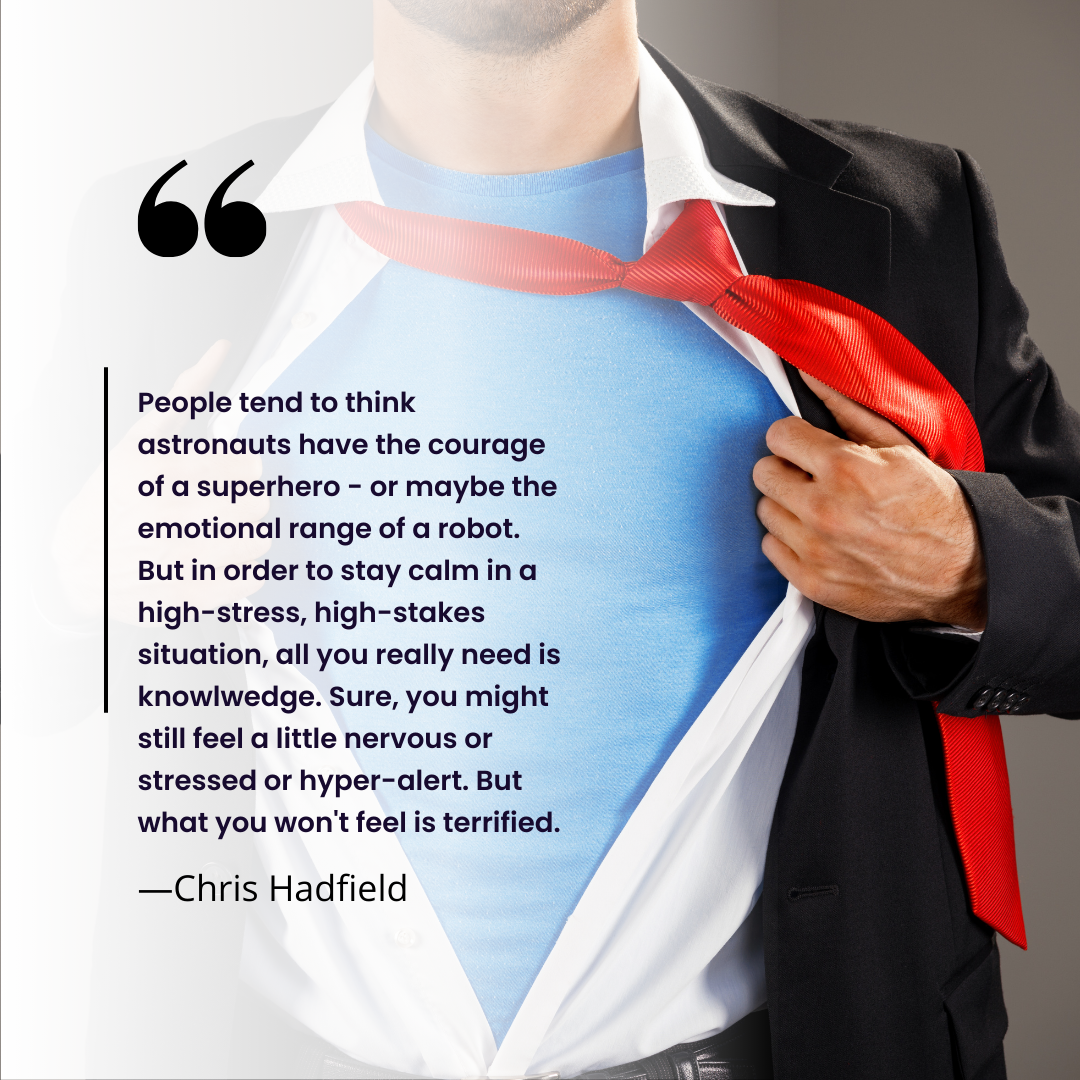
The Atlas rocket, which launched the Mercury astronauts into space, was feared as too flimsy. “The Atlas boosters were blowing up every other day down at Cape Canaveral,” recalls former astronaut Jim Lovell, who would later become the commander of the ill-fated Apollo 13 mission. “It looked like a very quick way to have a short career. So I took the job.” Speaking of the Atlas rocket, Wernher von Braun – a former Nazi who later became a chief architect of the US space program – remarked, “John Glenn is going to ride on that contraption? He should be getting a medal just for sitting on top of it before he takes off.” We knew so little about the impact of spaceflight on the human condition that Glenn was instructed to read an eye chart every twenty minutes for fear that weightlessness would distort his vision.
In pop culture, astronauts like Lovell and Glenn are depicted as a bunch of risk-taking, swaggering hotshots with the guts to breezily sit on top of a dangerous rocket. It makes for good drama, but it misleads. Astronauts maintain their calm not because they have superhuman nerves. It’s because they have mastered the art of using knowledge to reduce uncertainty. As astronaut Chris Hadfield explains, “in order to stay calm in a high stress, high-stakes situation, all you need is knowledge … Being forced to confront the prospect of failure head-on – to study it, dissect it, tease apart all its components and consequences – really works.”
Even when riding on top of a flimsy rocket, many of the early astronauts felt in control because they were personally involved in designing the spacecraft. But they also knew what they didn’t know – what to be concerned about and what to ignore. Acknowledging these uncertainties was the first step is resolving them.
This approach has another upside. If we figure out what we know and what we don’t know, we contain uncertainty and reduce the fear associated with it. As author Caroline Webb writes, “The more we place boundaries on the uncertainty … the more manageable the remaining ambiguity feels to our brains.
WHY REDUNDANCIES AREN’T REDUNDANT
In everyday life, the word redundancy has a pejorative meaning. But in rocket science, redundancy can be the difference between success and failure – life and death. Redundancy in aerospace refers to a backup created to avoid a single point of failure that can compromise the entire mission. Spacecraft are designed to operate even when things go wrong – to fail without failing. It’s the same reason your car has a spare tire in the back and an emergency break in the front. If you have a flat or if your breaks malfunctions, the substitute picks up the slack.
For redundancies to work, they must function independently. Having four computers on the shuttle sounds wonderful, but since they’re all running the same software, a single software bug could simultaneously cripple all four computers. This is why the shuttle also included a fifth backup flight system, loaded with a different software built by a different subcontractor from the other four. If a generic software error crippled the four identical primary computers, the backup system kick in and return the spacecraft to Earth.
Think about it: Where are the redundancies in your own life? Where’s the emergency brake or the spare tire in your company? How will you deal with the loss of a valuable team member, a critical distributor, or an impatient client? What will you do if your household loses a source of income? The system must be designed to continue operating even if a component fails.
MARGINS OF SAFETY
In addition to redundancies, rocket scientists address uncertainty by building in margins of safety. For example, they build spacecraft stronger than what appears necessary or make thermal insulation thicker than required. These margins of safety protect the spacecraft in case the uncertain environment turns out to become hostile than expected.
As the stakes go up, so should the margins of safety. Is the probability of failure high? If failure happens, would it be costly? Is the door one-way or two-way? If you’re making irreversible one-way decisions, go for higher margins of safety.
The decisions made for spacecraft are mostly irreversible. After the spacecraft is launched, there’s no opportunity for a hardware recall. So the tools on the spacecraft must be versatile – resembling two-way doors.
If the tools on board the spacecraft are sufficiently versatile, they can perform functions that go far beyond their intended use. When Spirits right front wheel failed in March 2006, the navigators drove the rover backward for the rest of its life.
The same approach saved the astronauts on the Apollo 13 mission to the Moon. An oxygen tank exploded near the Moon, depleting the power and oxygen supply in the command module. So the three astronauts had to move out of the command module and into the lunar module, using it as a lifeboat to return home.
There are important lessons here for all of us. When we face uncertainty, we often manufacture excuses for not getting started. I’m not qualified. I don’t feel ready. I don’t have the right contacts. I don’t have enough time. We don’t start walking until we find an approach that’s guaranteed to work.
But absolute certainty is a mirage. In life, we’re required to base our opinions on imperfect information and make a call with sketchy data.
“We don’t know what we were doing when we landed” on Mars, Squyres admits, “How can you know what you’re doing when no one has done it before?” If the group had postponed until the choices presented themselves with perfect clarity – until they had perfect information about their landing sites so they could design the perfect set of tools for them – they would never have gotten to Mars. Someone else willing to tango with uncertainty would have beaten them to the finish line.
The path, as the mystic poet Rumi writes, won’t appear until you start walking. Steve Squyres started walking in search of his blank canvass, even though he had no idea it would one day lead him to Mars.
The secret is to start walking before you see a clear path.
Start walking because you can learn to walk backward if your wheels get stuck.
Start walking, and as you become accustomed to walking, watch your fear of dark places disappear.
Start walking because, as Newton first law goes, objects in motion tend to stay in motion – once you get going, you will keep going.
Start walking because your small steps will eventually become giant leaps.
Start walking not because it’s easy, but because it’s hard.
Start walking because it’s the only way forward.
REASONING FROM FIRST PRINCIPLES
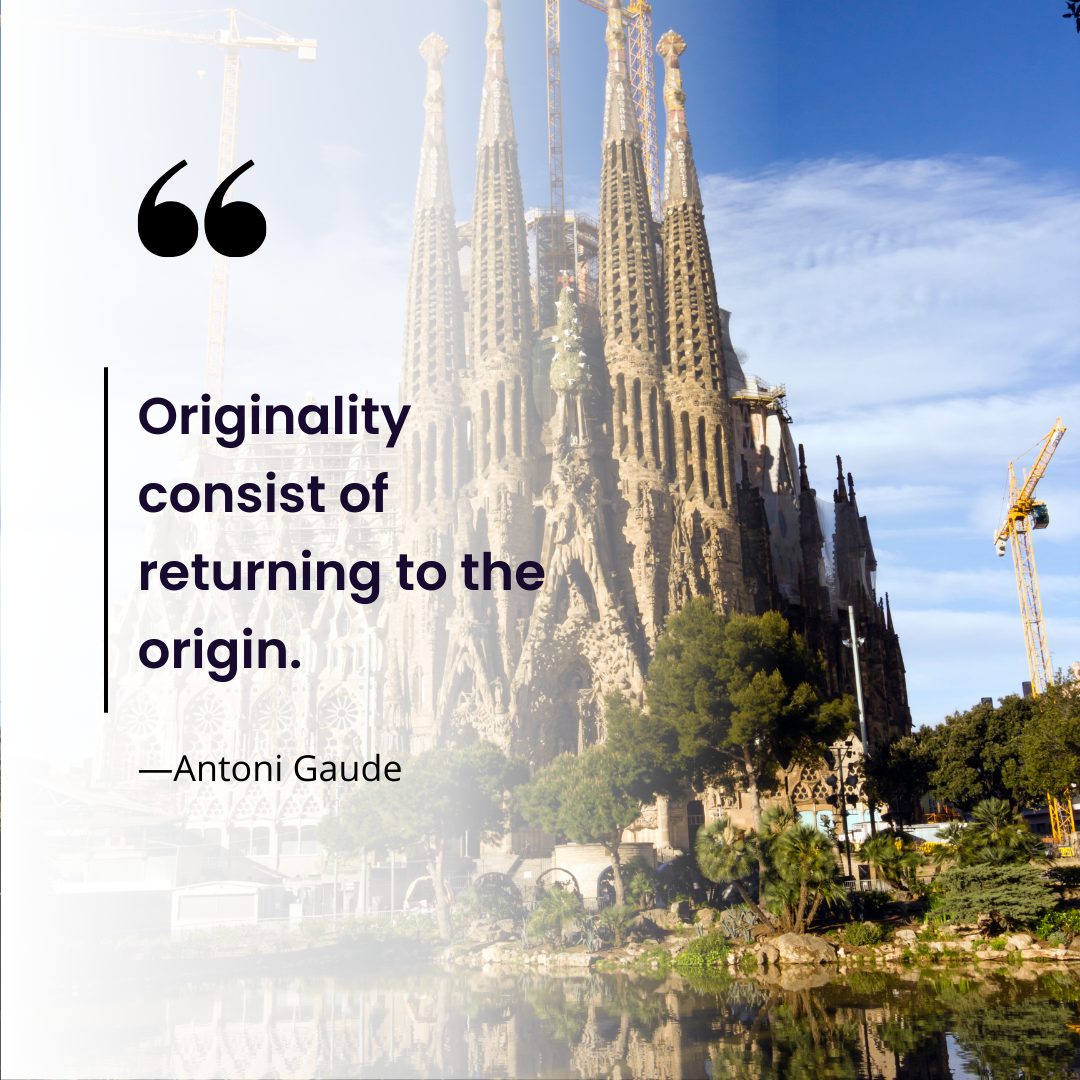
The credit for first-principles thinking goes to Aristotle, who defined it as “the first basis from which a thing is known.” The French philosopher and scientist Rene Descartes described it as systematically doubting everything you can possibly doubt, until you’re left with unquestionable truths. Instead of regarding the status quo as an absolute, you take a machete to it. Instead of letting your original vision – or the vision of others – shape the path forward, you abandon all allegiances to them. You hack through existing assumptions as if you’re hacking through a jungle until you’re left with the fundamental components.
First-principles thinking allows you to see the seemingly obvious insight that’s hiding under everyone’s nose. “Talent hits a target no one else can hit,” philosopher Arthur Schopenhauer said, but “genius hits a target on one else can see.” When you apply first-principles thinking, you switch from being a cover band that play someone else’s songs to an artist that does the painstaking work of creating something new. You go from what author James Carse calls a finite player, someone playing within boundaries, to an infinite player, someone playing with boundaries.
Returning home from his last shopping spree in Russia empty-handed, Musk had an epiphany. In trying to buy rockets that others had built, he realized he was playing the role of a cover band – a finite player. On the flight back home, Musk told Jim Cantrell, an aerospace consultant who accompanied Musk on the trip, “I think we can build a rocket ourselves.” Musk showed Cantrell a spreadsheet with numbers he had been crunching. Cantrell recalls, “I looked at it and said, I’ll be damned – that’s why he’s been borrowing all my rocketry books.”
“I tend to approach things from a physics framework,” Musk explained in a later interview. “Physics teaches you to reason from first-principles,” he added, “rather than by analogy” – in other words copying or analogizing from others with little deviation.
First-principles thinking prompted SpaceX to question another deeply held assumption in rocket science. For decades, most rockets that launched spacecraft into outer space couldn’t be reused. They would plunge into the ocean or burn up in the atmosphere after carrying their cargo to orbit, requiring an entirely new rocket to be built. It was the cosmic equivalent of torching the airplane at the end of each commercial flight. The cost of a modern rocket is about the same as a Boeing 737, but flying on a 737 is far less expensive because jets, unlike rockets, are flown over and over again.
The solution is obvious: Do the same thing with rockets. This is why part of NASA’s space shuttle were reusable. The solid rocket boosters that carried the shuttle into orbit would separate from the spacecraft and parachute down to the Atlantic Ocean, to be picked up and refurbished. The orbiter, which carried the astronauts, would also glide back to Earth after each mission to be reused on future flights.
A MIND AT PLAY
When I examine myself and my methods of thought, I came to the conclusion that the gift of fantasy has meant more to me than my talent for absorbing positive knowledge.
—Albert Einstein
“These rovers are so complicated that no one understands them.”
This might strike you as an odd statement coming from Steve Squyres, the principal investigator of the 2003 Mars Exploration project. He led the team responsible for dreaming up the rovers, devising the onboard instruments, and operating them on the Martian surface. But even to Squyres, the rovers are “too complicated for a single person to wrap their head around completely.” The understanding comes not individually, but as part of the collective brain.
We often fetishize the lone genius toiling away in the garage – whether it’s Bill Bowerman tinkering his waffle iron in his own garage which became the inspiration for Nike’s first pair of shoes or Steve Jobs building the first Apple computer from the garage of his family home. It makes for a great story, but like most stories, it’s a misleading depiction of how things work.
Optimal creativity doesn’t happen in isolation. Breakthroughs almost always involve a collaborative component. “If I have seen further,” Newton famously said, “it is by standing in the field of giants.” These giants come to the table with diverse perspectives, bringing their own apples and oranges for the collective body to compare and connect.
Entrepreneur and writer Frans Johansson calls this phenomenon the Medici effect. It refers to the fifteenth-century creative explosion that occurred when the wealthy Medici family brought together in Florence many accomplished individuals from different walks of life – scientists, poets, sculptors, philosophers, and more. As these individuals connected, new ideas blossomed, paving the way for the Renaissance (the word means rebirth in French).
A mission to Mars produces its own Medici effect by bringing together scientists and engineers to collaborate on the mission. Although these two groups tend to be lumped together in popular accounts of space exploration, they belong to very different tribes. Scientists are idealistic truth seekers trying to understand how the universe works. The engineers, on the other hand, are more pragmatic. They must design hardware capable of implementing the scientists’ vision, while grappling with practical realities like finite budgets and schedules.
Opposites don’t always attract. On each mission, there’s a tension between the “idealistic, impractical scientists” and “the stubborn, practical engineers,” as Squyres writes. On the good missions, this tension turns into a creative dance that brings out the best in both disciplines. But on bad missions, “it’s an acid that eats away at the collaboration until it’s rotten.”
The key to make the relationship work is combinatory play. The scientists learn some engineering, and the engineers learn some science. This approach was a top priority for Squyres. “If you come in,” he explains, “and you sat at one of our daily tactical planning sessions where we have a team of dozen scientists and a dozen engineers sitting together in a room, you could sit there for an hour and still not quite figure out who were the scientists and who were the engineers.” The team was blended so well – with the scientists and the engineers well versed in each other’s language and objectives – that you could hardly tell the difference.
You might assume that today’s work environment is an ideal setting for this type of blending. Sitting in cubicles in open spaces, and connected through always-on technologies like email and Slack, most modern workers are constantly collaborating with each other. Maybe it’s time for a new renaissance of a modern sort that will be dubbed the Slack effect.
But not so fast. Consider the result of one study, where researchers separated the participants into three groups and asked them to solve a complex problem. The first group worked in complete isolation, the second group was in constant interaction, and the third group alternated between interaction and isolation.
The best-performing group was the third. “Intermittent breaks in interaction improve the collective intelligence,” the researchers observed. Cycling between isolation and interaction improved the average score of the group while also leading the group to find the best solutions more frequently. Importantly, both low performers and high performers in the group benefited from intermittent interaction. These results suggest that learning flowed in both directions, with one person’s conclusions becoming input for the others.
People should be able to cultivate insights on their own, come together to exchange those insights with the group, and then return to working alone, cycling between collaboration and solitude. The pattern is similar to the focus and boredom cycle.
When it comes to boosting creativity, cognitive diversity – blending together your version of scientists and engineers – isn’t just a buzzword. It’s a necessity.
THE POWER OF MOONSHOT THINKING
The moon is our most ancient companion. It has kept as company for much of the Earth’s existence. As Robert Kurson writes, the Moon has “controlled tides, guided the lost, lit harvests, inspired poets and lovers, spoke to children.” And since our ancestors first gazed their heads upward, the Moon has tantalized us, appealing to a primal instinct to explore beyond our home. But for most of our existence, it has remained a moonshot, far out of our reach.
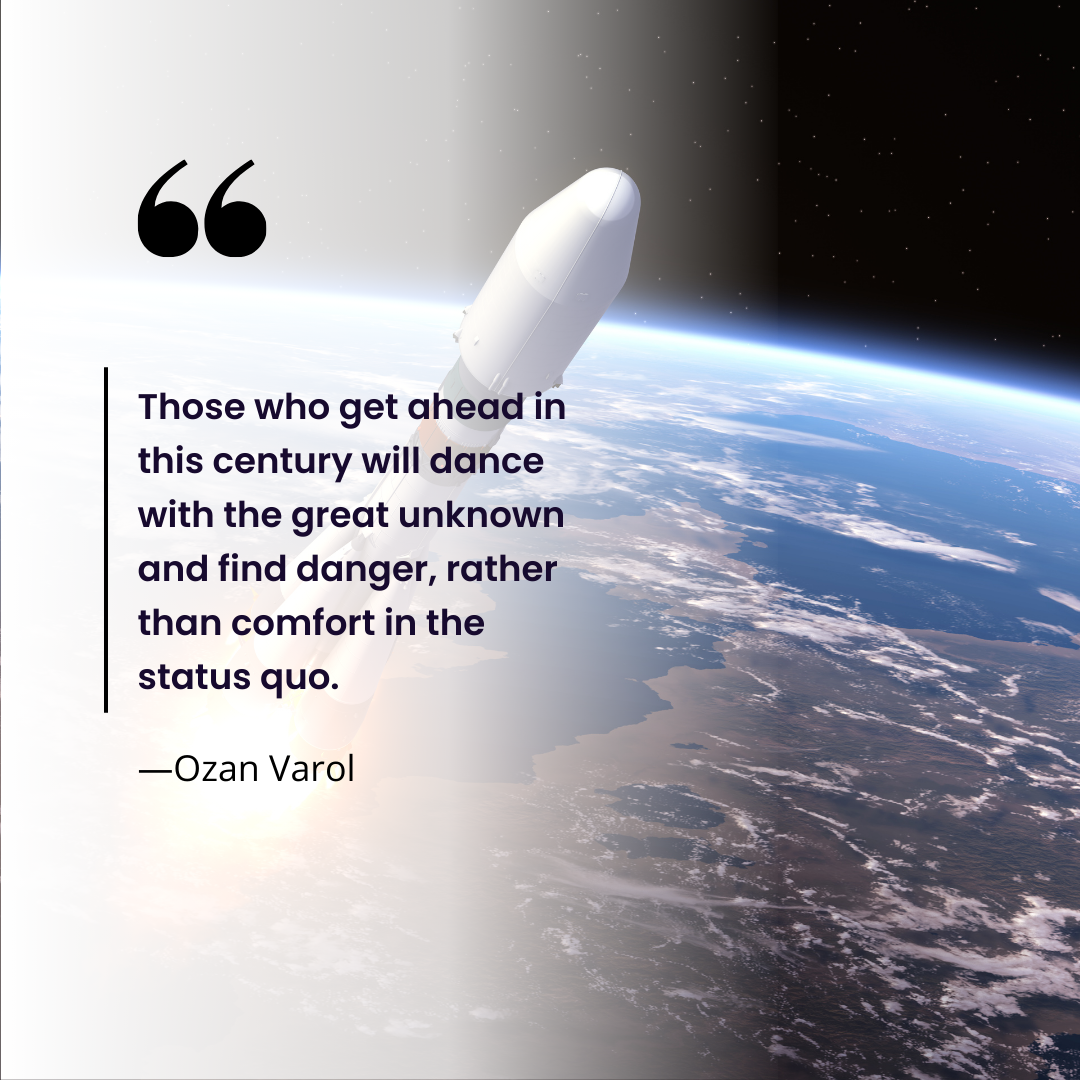
When President Kennedy gave his speech where he looked to the future and picked the moon as our new frontier – it appeared that he was hoping for a miracle. Kennedy asked his nation “to do what most people thought was impossible,” as Apollo astronaut Gene Cernan recalled.
This was humanity’s first moonshot. But humans have been taking metaphorical moonshots long before Neil Armstrong and Buzz Aldrin walked on the Moon. When our ancestors blazed a trail to some unknown corner of the earth, they took a moonshot. The discoverers of fire, the inventors of the wheel, the builders of the pyramids, the makers of automobiles – they all took moonshots. It was a moonshot for slaves to reach for freedom, for women to take the ballot, and for refugees to push toward distant shores in search of a better life.
Moonshots force you to reason from first principles. If your goal is 1 percent improvement, you can work within the status quo. But if your goal is to improve tenfold, the status quo has to go. Pursuing a moonshot puts you in a different league – and often entirely a different game – from that of your competitors, making the established plays and routines largely irrelevant.
The political strategists James Carville and Paul Begala tell a story about a choice a lion faces in deciding to hunt for a mouse or an antelope. “A lion is fully capable of capturing, killing, and eating a field mouse,” they explain. “But it turns out that the energy required to do so exceeds the caloric content of the mouse itself.” Antelopes, in contrast, are much bigger animals, so “they take more speed and strength to capture. But once captured, an antelope can provide days of food for the lion.
The story, as you may have guessed, is a microcosm of life. We think that the mouse is a sure thing, but the antelope is a moonshot. Mice are everywhere; antelopes are few and far between. We assume that if we decide to go for antelopes, we might fail and go hungry.
So we don’t launch a new business, because we think we don’t have what it takes. We hesitate to apply for promotion, assuming that someone far more competent will get it. We don’t ask people on a date if they seem out of our league. We play not to lose instead of playing to win. “The story of the human race, psychologist Abraham Maslow wrote in 1933, “is the story of men and women selling themselves short.”
You might be thinking, it’s easy for internet billionaires to start a space company. It’s easy for Kennedy to pursue a moonshot when Congress has funneled billions of dollars into beating the Soviets to the Moon. It’s easy for Google X, backed by the financial might of Google to search for previously unknown possibilities. But, you might think, it’s impossible to chase moonshots when you’ve got a business to keep afloat, mortgage payments to make, and board members to please.
This is an objection that Astro Teller – the captain of moonshots at Google X (yes, that’s his real title) – hears frequently. “Somehow society has developed this notion that you have to have a huge amount of money to be audacious,” he says. But Teller doesn’t buy it: “Taking good, smart risks is something that anyone can do, whether you’re on a team of 5 or in a company of 50,000.” Jeff Bezos of Amazon would agree. “Given a ten percent chance of a 100 times payoff, you should take that bet every time,” he wrote in Amazon’s annual letters to shareholders in 2015. But most of us won’t place bets that have a 50 percent chance of success, regardless of the potential reward.
Here’s the thing: The hurdle of taking moonshots isn’t financial or practical one. It’s a mental case. “Not many people believe that they can move mountains,” David Schwartz says in The Magic of Thinking Big. “So, as a result, not many people do. The primary obstacles to moonshots are in your head, reinforced by decades of conditioning by society. We’ve been seduced into believing that flying lower is safe than flying higher, that coasting is better than soaring, and that small dreams are wiser than moonshots.
Our expectations morph reality and become self-fulfilling prophecies. What you strive for becomes your ceiling. Go for mediocrity, and mediocrity is what you’ll get – at best. But if you course-correct in the direction of the Moon – as opposed to the ground – you’ll soar higher than you would have before. “If you set your goals ridiculously high and it’s a failure, you will fail above everyone else’s success,” says James Cameron, the filmmaker behind such blockbusters as The Terminator and Titanic.
REFRAME QUESTIONS TO GENERATE BETTER ANSWERS
A problem well defined is a problem half solved.
The way that most people solve problems remind the author of a scene from Alice’s Adventures in Wonderland. In the scene, the Knave of Hearts is on trial for supposedly stealing tarts. After the evidence is presented, the King of Hearts, who’s presiding as a judge, says, “Let the jury consider their verdict.” The impatient Queen of Hearts interrupts and retorts. “No, no! Sentence first. Verdict afterwards.”
Don’t be afraid to challenge conventional wisdom. Innovation often stems from thinking differently.
—Ozan Varol
In solving problems, we instinctively want to identify answers. Instead of generating cautious hypotheses, we offer bold conclusions. Instead of acknowledging that problems have multiple causes, we stick with the first cause that pops in mind. Doctors assume they have the right diagnosis, which they base on symptoms they have seen in the past. In boardrooms across America, eager to appear decisive, board members fall over each other to be the first to deliver the correct answer to a perceived problem.
But this approach puts the cart before the horse – or the sentence before the verdict. When we immediately launch into answer mode, we end up chasing the wrong problem. When we rush to identify solutions – when we fall in love with our diagnosis – our initial answer hides better ones lurking in plain sight. When the sentence is announced first, the verdict’s always the same: guilty. The difficulty lies, as John Maynard Keynes said, “not in the new ideas, but in escaping from the old ones.”
When we’re familiar with a problem, and when we think we have the right answer, we stop seeing alternatives. This tendency is known as the Einstellung effect. In German, einstellung means “set,” and in this context, the term refers to a fixed mental set or attitude. The initial framing of the question – and the initial answer – both stick.
This approach is wildly disconnected from reality. In our adult lives, problems often aren’t handed to us fully formed. We have to find, define, and redefine them ourselves. But once we find a problem, our educational conditioning kicks in, launching us into answer mode rather than asking whether there’s a problem to solve. Although we pay lip service in the importance of finding the right problem, we double down on the same tactics that have failed us in the past.
Over time, we become a hammer, and every problem looks like a nail. In a survey of 106 senior executives spanning ninety-one corporations in seventeen countries, 85 percent agreed or strongly agreed that their businesses were bad at defining problems and that this weakness, in turn, imposed significant ones. Paul Nutt found that business failures happen in part because problems aren’t defined properly. For example, when businesses spot an advertising problem, they search for an advertising solution, artificially excluding all other possibilities. This environment is hostile to innovation. “Preconceived solutions and limited searches for options,” Nutt concluded, “are recipes for failure.”
HOW TO SPOT THE TRUTH AND MAKE SMARTER DECISIONS
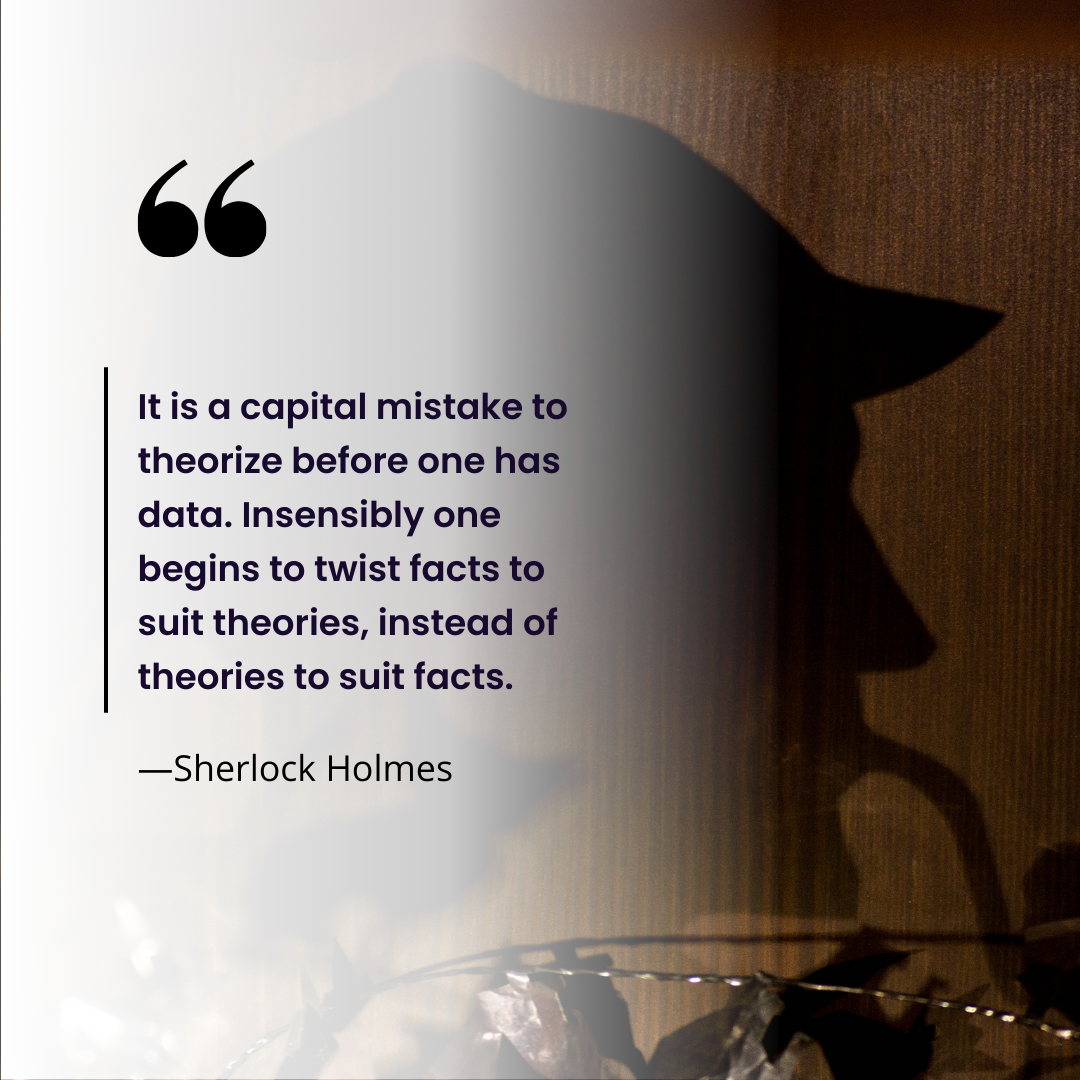
Niels Bohr and Albert Einstein were among the greatest intellectual rivals in science. They engaged in a series of public debates about quantum mechanics – specifically about the uncertainty principle, which says that it’s impossible to determine both the exact position and the exact momentum of subatomic principles.
Despite their sharp intellectual disagreements, the relationship between Bohr and Einstein was one of mutual respect. True to form, Einstein came up with a series of thought experiments to challenge the uncertainty principle. During the Solvay conference on physics which brought together the world’s most prominent physicists, Einstein would arrive for breakfast and giddily he had invented another thought experiment that falsified the uncertainty principle.
Bohr would consider Einstein’s challenge all day. By dinner, Bohr would usually have an answer to put Einstein in his place. Einstein would then retreat to his hotel room and descent to breakfast the next day armed with a brand-new thought experiment.
Bohr and Einstein turned to each other to stress-test their opinions because the men were too close to their perspectives to see their own blind spots. “One thing a person cannot do, no matter how rigorous his analysis or how heroic his imagination,” Nobel laureate Thomas Schelling once observed, “is to draw up a list of things that would never occur to him.”
This is also why disagreement is built into the scientific process. “Progress in science,” theoretical physicist John Wheeler says, “owes you more of the clash of ideas than the steady accumulation of facts.” Even scientists who work in seclusion must eventually expose their ideas to their colleagues through peer review – a hurdle that all major scientific publications must clear. But publication isn’t the end of it. The conclusion in the publication must then be independently verified by other scientists who have no motive to support the ideas.
In one of the author’s favorite commencement speeches of all time, David Wallace tells the story of two young fish. The fish are swimming alone, and they happen to meet an older fish swimming the other way, who nods at them and says, “Morning, boys, how’s the water?” The two young fish swim on, “and then eventually one of them looks over at the other and goes, ‘What the hell is water?”
Everything we observe in the world is through our own eyes. What may be obvious to others – we’re swimming in water – isn’t obvious to us. They’re not wedded to our vision of the world, they don’t have the same emotional attachment to our opinions, and they won’t swat away conflicting information like we do. “The road to self-insight,” psychologist David Dunning said, “runs through other people.”
Yet this road is often obstructed. In the modern world, we live in a perpetual echo chamber. Although technology has torn down some barriers, it has ended up erecting others. We friend people like us on Facebook. We follow people like us on Twitter. We read blogs and newspapers that vibrate on the same political frequency. It’s easy to connect only with our tribes and disconnect from others. Just unsubscribe, unfollow, or unfriend.
This internet-fueled tribalism exacerbates our confirmation bias. As our echo chambers get louder and louder, we’re repeatedly bombarded with ideas that reiterate our own. When we see our own ideas mirrored in others, our confidence levels skyrocket. Opposing ideas are nowhere to be seen, so we assume they don’t exist or those that adopt them must be irrational.
As a result, we must constantly step outside our echo chamber. Before making an important decision, ask yourself, “Who will disagree with me?” If you don’t know of any people who disagree with you, make a point to find them. Expose yourself to environments where your opinions can be challenged, as uncomfortable and awkward as that might be.
You can also ask people who normally agree with you to disagree with you. For example, the author gave his trusted advisers early draft of this book and asked them to point out not what’s right, not what they loved, but what’s wrong, what should be changed, what should be taken out. This approach provides psychological safety to those who might otherwise withhold dissent for fear of offending you.
The voice of dissent could be anyone. You can ask yourself, “What would a rocket scientist do?” and imagine a rocket scientist critically questioning your ideas. Think through what a dissatisfied customer would say about your newest product or how a new CEO who would replace you approach the same problem.
In constructing a model of how an adversary thinks, you must be as objective and fair as possible. Avoid the instinct to caricature the opposing position, making it easier to debunk – a tactic called the straw man. For example, a political candidate advocates increased regulation on greenhouses from cars. Another candidate responds that cars are essential for people to get to work and that the proposal will destroy the economy. The argument is a straw man because the proposal calls for increased regulation – not elimination of cars – but it’s far simpler to rebut the more extreme version of the idea.
Instead of using a straw man tactic, engage in its opposite, the steel man. This approach requires you to find and articulate the strongest, not the weakest, form of the opposition’s argument. Charlie Munger, vice chairman of Berkshire Hathaway, is a major proponent of this idea. “You’re not entitled to take a view,” he cautions, “unless and until you can argue better against that view than the smartest guy who holds that opposite view.”
In your life, you should find the light-filled box – the challenge to your central belief system – and never let go. In the end, it takes courage, humility, and determination to find the truth instead of the convenient. But it’s well worth the effort.
NOTHING SUCCEEDS LIKE FAILURE
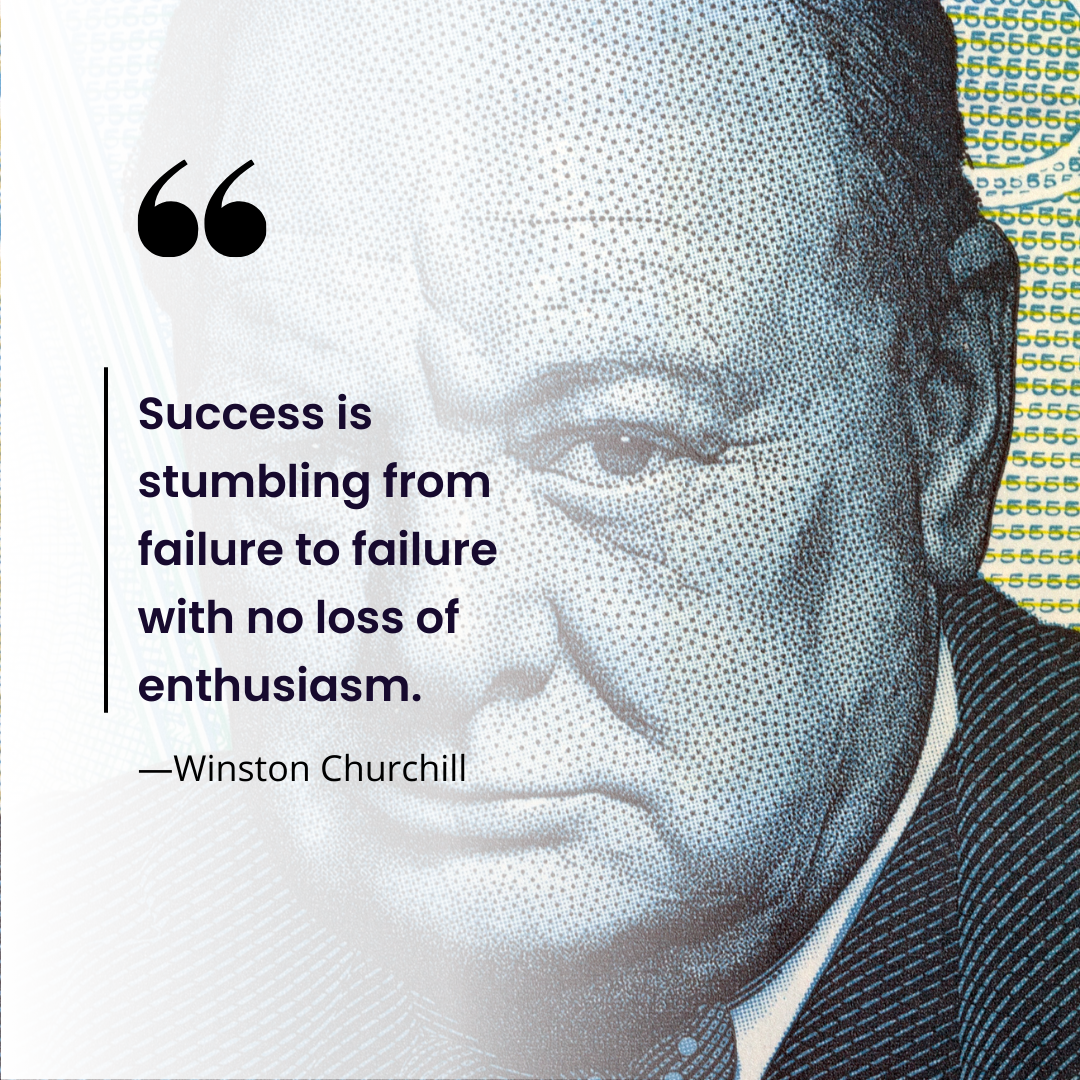
In Apollo 13, there’s a scene where a group of rocket scientists are gathered in a room after learning that the spacecraft suffered an oxygen tank explosion on its voyage to the Moon. The spacecraft’s power is dangerously low, and the astronauts’ days are numbered. The scientists in mission control must figure out a way to get them back before their power runs out. “We never lost an American in space. We’re sure as hell not going to lose one on my watch,” roars Gene Kranz, the flight director, before adding the punch line: “Failure is not an option.” Kranz later wrote an autobiography with the same title, where he described the tagline as “a creed that we all live by” in mission control.
The mantra makes sense when you’ve got human lives at stake. But as a descriptor for how rocket science works, it’s misleading. There’s no such thing as a zero-risk rocket launch. You still have to compete with physics. You can plan for some mishaps, but the cosmic banana peel is always around the corner. Accidents are inevitable when you’re creating a controlled explosion in a machine as complex as a rocket.
If failure weren’t an option, we never would have dipped our toes into the cosmic ocean. Doing anything groundbreaking requires taking risks, and taking risks means you’re going to fail – at least some of the time,” Elon Musk says. “Failure is an option here at SpaceX. If things are not failing, you are not innovating enough.” It’s only when we reach into the unknown and explore ever greater heights – and in so doing, break things – that we move forward.
The same is true for scientists working in a lab. For them, without the ability to be wrong, they could never be right. Some of their experiments succeed and others don’t. If things don’t work as planned, it’s a hypothesis proven wrong. They can tweak the hypothesis, try a different approach, or abandon it altogether.
British inventor James Dyson described the inventor’s life as “one of failure.” It took Dyson fifteen years and 5,216 prototypes to get his revolutionary bagless vacuum to work. Several of Einstein’s attempts to devise a proof for E = mc2 failed. In some fields – for example, pharmaceutical drug development – the average failure rate is over 90 percent. If these scientists live by the “failure is not an option” mantra, the self-loathing, the shame, and the embarrassment would all cripple them.
A moratorium on failure is a moratorium on progress.
If you’re in the business of taking moonshots – if you’re going to experiment with bold ideas – you’re going to miss more often than you connect. “Experiments are by their very nature prone to failure,” Jeff Bezos explained. “But a few successes compensate for dozens and dozens of things that didn’t work.”
Treating failure as an option is the key to originality. “When it comes to idea generation,” Adam Grant writes in Originals, “quantity is the most predictable path to quality.” Shakespeare, for example, is known for a small number of his classics, but in the span of two decades, he penned 37 plays and 154 sonnets, some of them have been “consistently slammed for unpolished prose and incomplete plot and character development.” Pablo Picasso produced 1,800 paintings, 1,200 sculptures, 2,800 ceramics, and 12,000 drawings – only a fraction of which are noteworthy. Just a handful of Einstein’s hundreds of publications had real impact. Tom Hanks, a multi-awarded best actor admits, “I’ve made an awful lot of movies that didn’t make any sense, and didn’t make any money.”
But when we judge the greatness of these individuals, we don’t focus on their thoughts. We focus on the peaks. It’s one thing to acknowledge that failure is an option. But it’s something else to celebrate it. Take the sting and shame out of failure.
CONCLUSION
NOTHING FAILS LIKE SUCCESS
Madonna is a master at reinventing herself. She has evolved with the times, collaborating with different producers and writers. Her consistent reinvention has been the hallmark of her superstardom for over three decades.
But major corporations aren’t Madonna. The wheels of corporate change are notoriously slow, particularly when it comes to fundamental transformation. but one major corporation managed to reinvent itself not just once – but twice – in record time.
Netflix started by disrupting the traditional video rental model by shipping DVDs through the mail. But even as the company began to corner the market, its cofounder and CEO, Reed Hastings, remained vigilant. We can reframe questions to generate better answers by focusing on strategy instead of tactics. Applying this principle, Netflix realized it wasn’t in the DVD-delivery business. That was a tactic. Rather, it was in the movie-delivery business. That was its strategy. Delivering DVD through the mail was simply one tactic among many others – including streaming media – in service of that strategy. “My greatest fear at Netflix,” Hastings said, “has been that we wouldn’t make the leap from success in DVDs to streaming.” Hastings saw the handwriting on the wall – DVDs would soon become obsolete – and tried to stay ahead of the melt on the ice-cream cone.
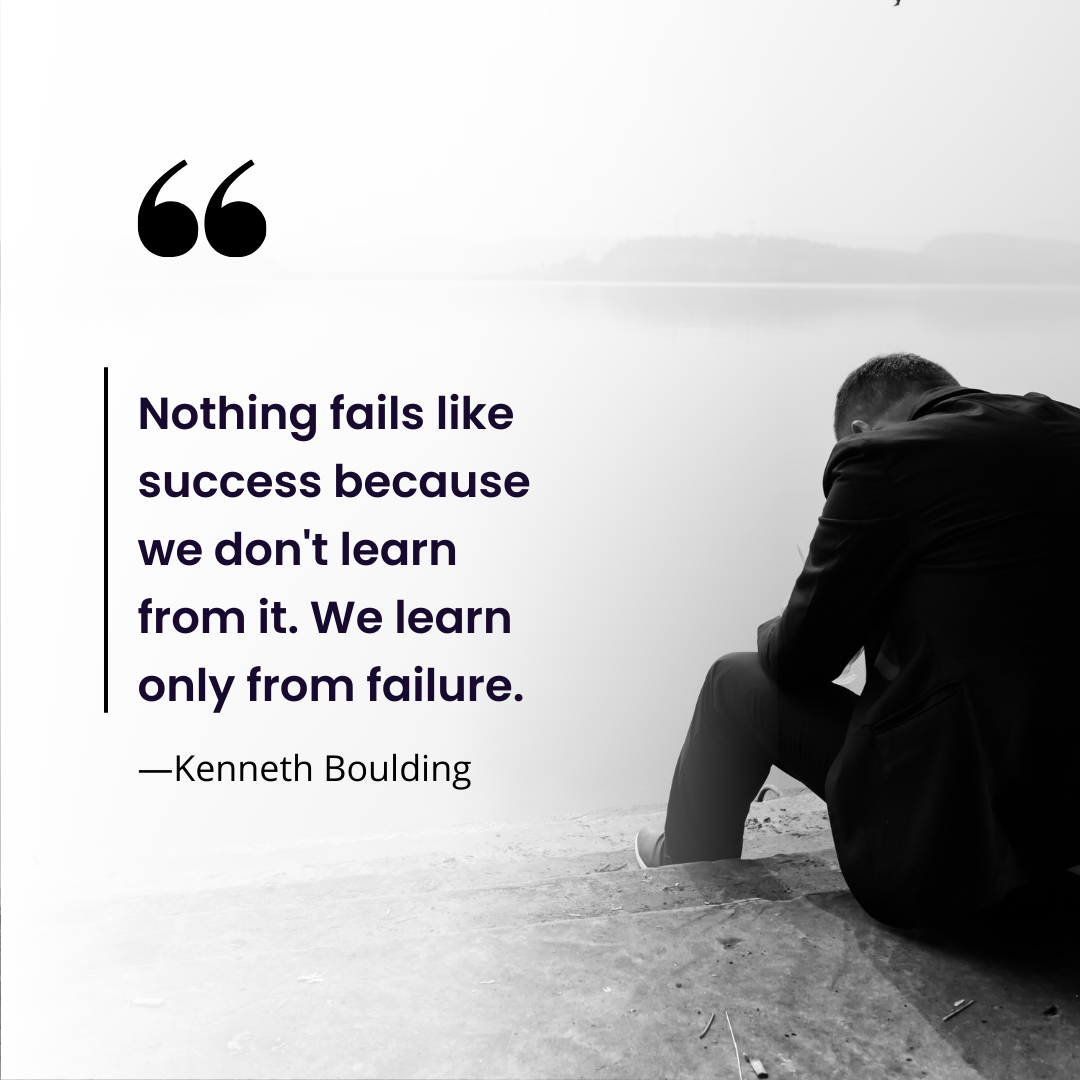
For Netflix, the leap to streaming arguably came too fast. In 2011, when the company announced plans to focus only on streaming and convert the DVD business to a separate, stand-alone company, its customers balked. But the mistake – if it was a mistake at all – was far better than the alternative of doing nothing.
Netflix then made another leap into developing original content instead of paying the big studios in Hollywood for it. This leap turned out to be a huge success by every metric. Netflix had a disproportionate amount of hits with flops it ended up cancelling. But to Hastings, this proportion was a bad omen. “Our hit ratio is too high right now,” he said, “We should have a higher cancel rate overall.”
Hastings desire for less success may strike you as irrational, but he’s onto something. We often treat variances in our personal and professional success rates as errors. If given the option, we would prefer uninterrupted peak performance, rather than interruptions through the valleys of failure. But as business school professor Sim Sitkin explains, “regularity and uninterrupted success are a problem and a sign of weakness rather than an unequivocal sign of strength.”
Regular success as the Challenger and Columbia disasters remind us, can portend long-term trouble. Research shows that success and complacency go hand in hand. When we succeed, we stop pushing boundaries. Our comfort sets a ceiling, with our frontiers shrinking rather than extending. Corporate executives are rarely punished for deviating from a historically successful strategy. But the risk of punishment is far greater if an executive abandon a successful strategy to pursue one that ends up failing. As a result, instead of risking something new, we maintain the same “proven” formula that lead to success. this tactic works well -until it doesn’t.
SpaceX’s zero-for-three record for the Falcon 1 launches came close to killing the company, but those early failures served as sobering reality checks. They prevented the company from growing complacent. When those failures eventually gave way to a string of successes, SpaceX fell victim to its own hubris. In June 2015, a Falcon 9 rocket exploded on its way up to the International Space Station. Elon Musk placed the blame squarely on the company’s successful track record. “It’s the first time we’ve had a failure in seven years,” he said, “so, to some degree, the company as a whole got a little complacent.”
To prevent complacency, knock yourself off the pedestal once in a while. “You have to disrupt yourself,” Steve Forbes said, “or others will do it for you.” If we don’t experience variability in our track record – if we don’t prevent our confidence from inflating after a string of random successes – then catastrophic failures tend to end your business or your career. “If you’re not humble,” said former world heavyweight champion Mike Tyson, “life will visit humbleness upon you.
THE NEW WORLD
Politicians used spaceflight for political ends, effectively hanging a guillotine over NASA’s head. Ambitious missions were announced in John F. Kennedy fashion by one administration only to be canceled by the next. Funding waxed and waned in response to the prevailing political winds. As a result, NASA lacked a clear vision. In 2002, shortly before his death, Neil Armstrong repeatedly invoked the baseball legend Yogi Berra to describe the agency’s predicament: “If you don’t know where you are, you might not get there.”
We didn’t know where we would go after NASA retired the space shuttle in 2011 – with no replacement in place. After the remaining space shuttle rolled off the launch pads and into museums. American astronauts had to ride shotgun to the station on Russian rockets. The tickets cost $81 million per passenger – nearly $20 million more than the launch of an entire SpaceX Falcon 9 rocket. In an ironic twist, the space agency established to beat the Russians, became dependent on them.
NASA was the reason Ozan – like many others – fell in love with space exploration. For decades the acronym NASA represented the gold standard for thinking like a rocket scientist. Yet, after it blazed a trail to the New World, NASA largely handed off the human-spaceflight baton to others.
In 2004, while the space shuttle was still grounded in the wake of the Columbia disaster, Burt Rutan’s SpaceShipOne became the first privately funded vehicle to reach space. Then, after the space shuttle was officially retired, NASA awarded SpaceX and Boeing contracts to build rockets to take the American astronauts to the International Space Station.
In one scene in the movie The Wizard of Oz, Dorothy steps out of her house to see the new word in its full-color glory for the first time after spending her life in a monochrome. Once she sees the vivid colors, she can’t unsee them. For her, there’s no going back to the black-and-white.
But the world doesn’t work this way. Our default mode is regress – not progress. When left to our own devices, space agencies decline. Writers wither. Actors flare out. Internet millionaires collapse under the weight of their egos. Young and scrappy companies turn into the same acronym-driven, bloated bureaucracies they were seeking to displace. We return to black-and-white.
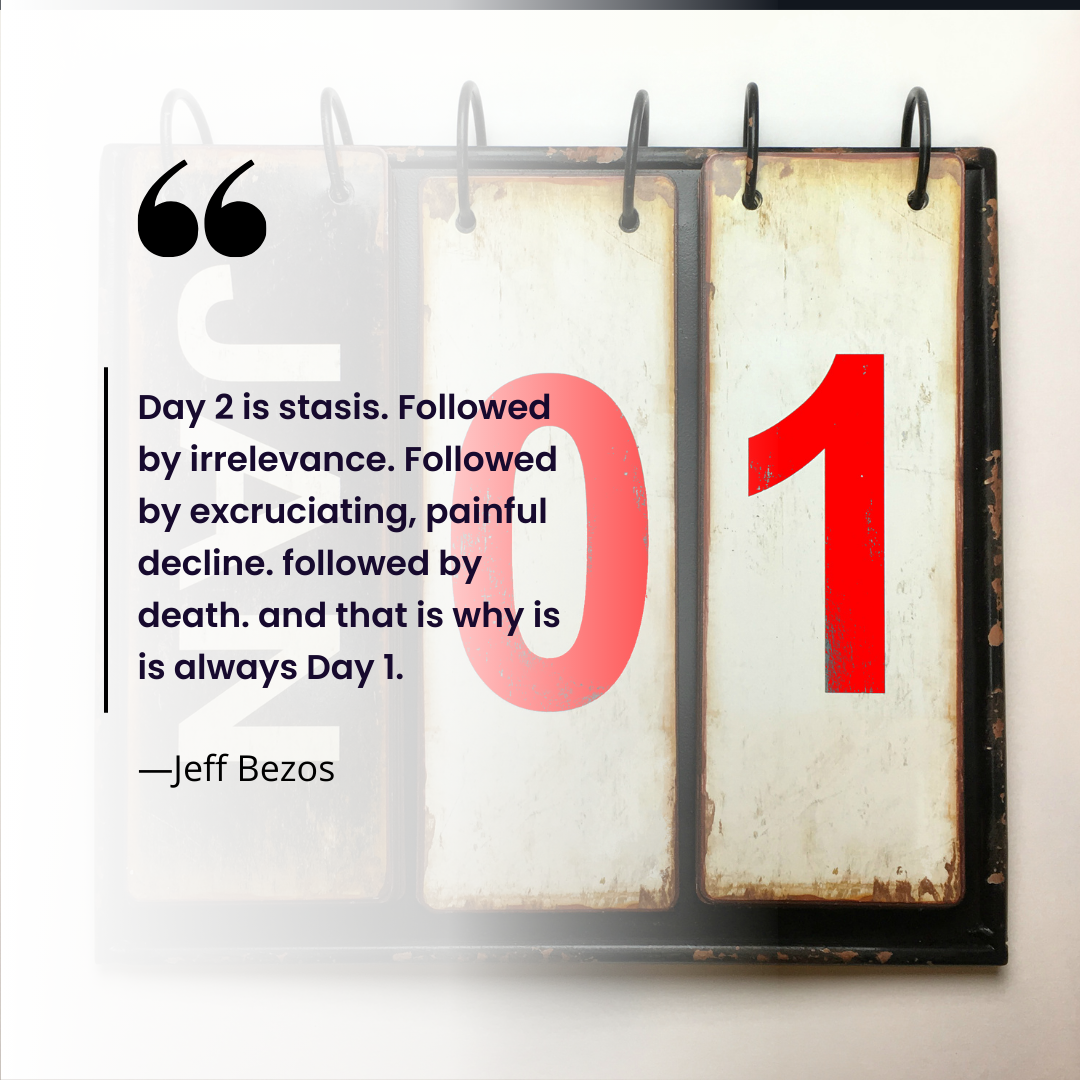
The journey cannot end once the mission is accomplished. That’s when the real work begins. When success brings complacency – when we tell ourselves that now we’ve discovered the New World, there’s no reason to return – we become a shadow of our former selves.
In every annual letter to Amazon shareholders, Jeff Bezos includes the same cryptic line: “It remains Day 1.” After repeating this mantra for a few decade, Bezos was asked what Day 2 would look like. He replied, “Day 2 is stasis. Followed by irrelevance. Followed by excruciating, painful decline. Followed by death. And that is why it is always Day 1.”
The rocker science mindset requires remaining in Day 1 and repeatedly introducing color into the monochromatic world. We must keep devising thought experiments, taking moonshots, proving ourselves wrong, dancing with uncertainty, reframing problems, testing as we fly, and returning to first principles.
We must keep walking the untrodden paths, sailing the wild seas, and flying the savage skies. “However sweet these laid-up stores, however convenient this dwelling, we cannot remain here,” Walt Whitman wrote. “However sheltered this port and however calm these waters, we must not anchor here.”
In the end, there’s no hidden playbook. No secret sauce. The power is there for the taking. Once you learn how to think like a rocket scientist – you can turn to the unimaginable into the imaginable, mold science fiction to fact, and stretch out your hands to touch the face of God.
The powerful play goes on, to quote Whitman again, and you may contribute a verse.
A new verse.
Even a whole story.
Your story.
What will it say?
///end
If you have any comments on our book digest series, please drop us a note aboitiz.eyes@aboitiz.com

